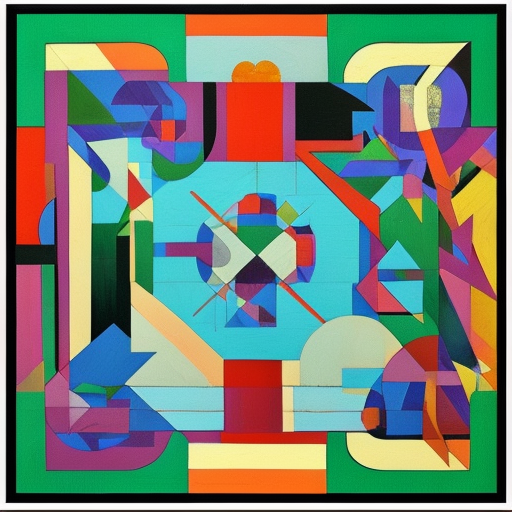Summary:
Constructivism is an influential art movement that emerged in Russia in the early 20th century. It rejected traditional forms of art and sought to create a new visual language that reflected the modern industrial society. Constructivist artists believed in the power of art to contribute to social and political change. They emphasized the use of geometric shapes, abstraction, and the integration of art with technology and architecture. Constructivism had a significant impact on various art forms, including painting, sculpture, graphic design, and architecture.
Origins and Influences:
Constructivism emerged in Russia after the Bolshevik Revolution of 1917. The movement was influenced by various avant-garde movements, including Suprematism and Cubism. Artists such as Kazimir Malevich and Vladimir Tatlin played crucial roles in shaping the ideas and principles of Constructivism. They sought to break away from the past and create a new art that was relevant to the modern world.
Principles and Concepts:
Constructivism was characterized by its emphasis on the use of geometric forms and abstraction. Artists aimed to create works that were functional and could be integrated into everyday life. They believed that art should serve a social purpose and contribute to the construction of a new society. Constructivist artists also embraced technology and industrial materials, using them to create innovative and dynamic artworks.
Painting and Sculpture:
In painting, Constructivist artists moved away from representational forms and focused on geometric abstraction. They used bold colors and simplified forms to create dynamic compositions. Artists like El Lissitzky and Aleksandr Rodchenko experimented with new materials and techniques, incorporating elements of photography and typography into their works. Sculpture in Constructivism was often characterized by its use of industrial materials such as metal and glass. Artists aimed to create three-dimensional works that were visually striking and had a functional purpose.
Graphic Design and Architecture:
Constructivism had a significant impact on graphic design, particularly in the development of the Constructivist poster. Artists like Rodchenko and Lissitzky used bold typography, geometric shapes, and vibrant colors to create visually powerful and politically charged posters. These posters were used as propaganda tools to communicate the ideals of the Soviet state.
In architecture, Constructivism sought to create buildings that were functional, efficient, and reflected the ideals of the new society. Architects such as Tatlin and Moisei Ginzburg proposed innovative designs that incorporated new materials and construction techniques. They aimed to create buildings that were accessible to all and could contribute to the well-being of society.
Legacy and Impact:
Constructivism had a profound impact on the development of modern art and design. Its principles and concepts influenced various art movements, including De Stijl and Bauhaus. The emphasis on functionality, abstraction, and the integration of art with technology continues to be influential in contemporary art and design practices. Constructivism also played a significant role in shaping the visual identity of the Soviet Union and its propaganda efforts.
In conclusion, Constructivism was a groundbreaking art movement that emerged in Russia in the early 20th century. It rejected traditional forms of art and sought to create a new visual language that reflected the modern industrial society. Constructivist artists emphasized the use of geometric shapes, abstraction, and the integration of art with technology and architecture. The movement had a significant impact on painting, sculpture, graphic design, and architecture, and its principles continue to be influential in contemporary art and design practices.












